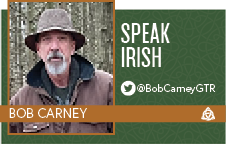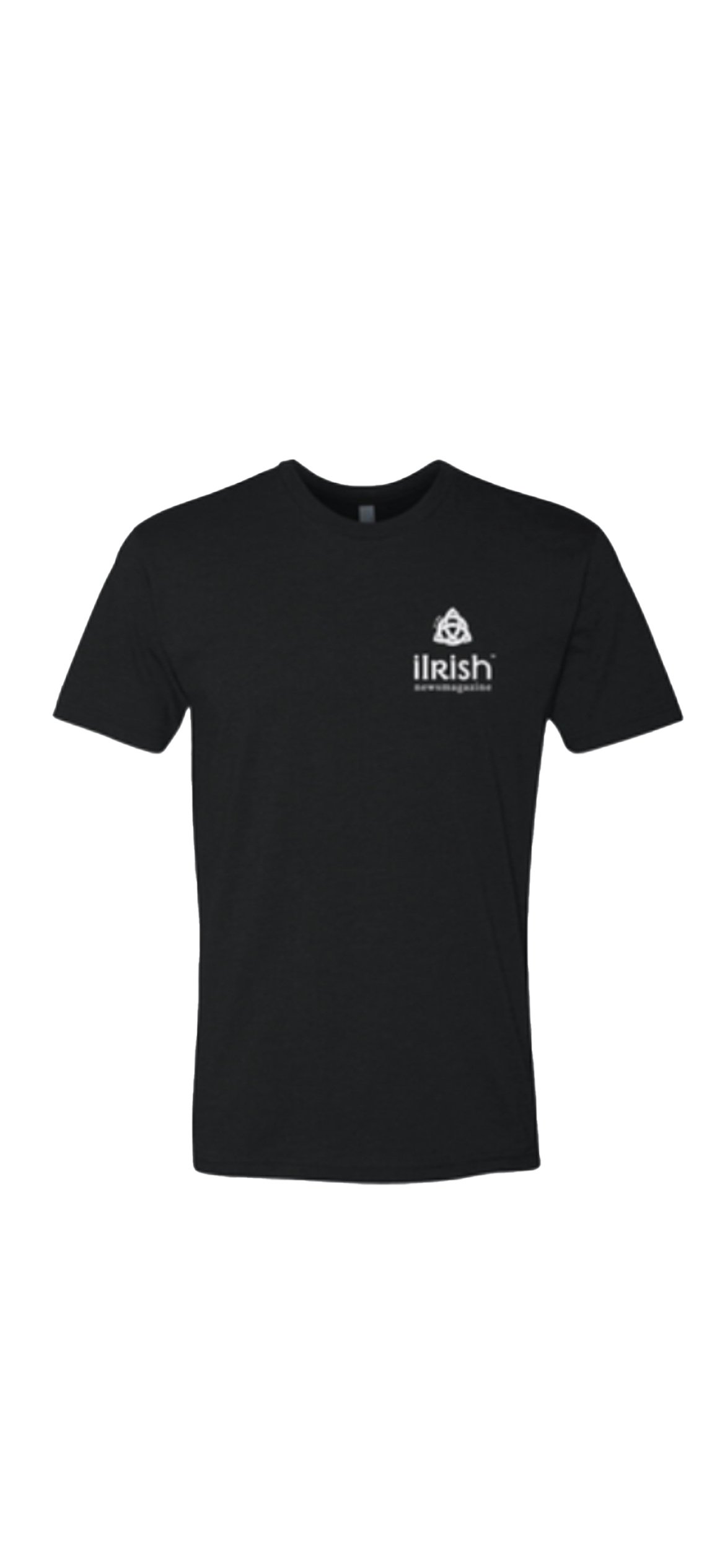
By Bob Carney
TÁ SÚIL AGAM, GO BHFUIL SIBH GO MAITH!
A brand new 10-sessions of Speak Irish Cleveland is about to begin. Many thanks to Pat and Doug at PJ McIntyre’s for their loyal support, without them this class would be impossible.
Maybe you’ve read this column in the past, and thought “ I should give this a try”. Now is your chance!
This is a new beginning, even if you don’t know a single word of Irish. Our introductory class starts on that premise.
With a little effort and a lot of fun, you’ll leave after the first night with just enough Irish to impress or aggravate friends and family. Some of the other benefits of attending is a camaraderie that develops among all of us as we learn the language of our ancestors. Many of our fellow learners value the social aspect of the class as much as the study of the language.
This months vocabulary is an example of what will be studied in the introductory class, along with a smattering of Irish history and language trivia. These are the basics of conversation, greetings and introductions.
You may have noticed that little line over some of the vowels, that is called a fada (fah-duh), the Irish word for long. It is there to help us with pronunciation. As we go a little further, you may see a word spelled differently or even in the parentheses, pronounced differently.
That is because of the grammar involved; no need to worry about that now. We learned to speak English with no knowledge of grammatical rules at first. Remember the sole purpose of language is conversation with others.
There are also regional dialects in Irish, so as you try out some of these phrases and someone corrects your pronunciation, it may be they learned the phrase from someone from a certain area of Ireland. We try to share all three dialects whenever possible, and it is best to have an understanding of all three.
Years ago, I asked a friend who teaches a class in Philadelphia what dialect he taught. Here in Cleveland, many of our students have Mayo roots.
I learned the Munster dialect which is slightly different. He told me not to worry about it and try to share all three dialects. After all, we are Americans in America learning Irish, there is no wrong or right dialect to learn.

GREETINGS
Let’s start with the phrase at the top. Tá súil agam, go bhfuil sibh go maith. (taw shool ah-gum, guh will shiv guh mah) “I hope you all are doing well.”
We can easily change that phrase to “I hope you are doing well” by changing the pronoun sibh, which means y’all, to tú (too) you. Tá suil agam, go bhfuil tú go maith.
Dia duit (dee-uh gwit) – God to you, is the usual form of greeting someone. In other parts of the country, this may be pronounced (jee-uh ghitch). Dia daoibh (dee-uh yeev) would be used when addressing more than one person, “God to all of you.” Dia’s Muire duit (dee-us morra gwit), God and Mary to you, is the proper reply, and Dia’s Muire daoibh (dee-us morra yeev), is used when responding to more than one.
BLESSINGS
Irish is not without a sense of humor. When someone sneezes, we say Dia linn! (dee-uh lynn), God to us! One of my former teachers told me, you’re already sick, we need the blessing!
For the second sneeze, Dia linn is Muire! (dee-uh lynn iss morra), God and Mary with us! And so on, adding Pádraig, Bríd and Colm Cille, after which you would say Capall bán fút! (kah-pahl bahn fuut), A white horse under you!
Bail ó Dhia ar an obair! (by-ll oh yee-uh ar ahn oh-ber), The blessing of God on the work!
Which is a greeting used when addressing someone in the middle of work or a chore. An bhail chéanna ort! (ahn wahl kenna ort), The same blessing on you! an appropriate reply.
Go mbeannaí Dia duit, (guh mah-nee dee-uh gwit) means God bless you. You might say, Go ngnóthaí Dia duit (guh noo-ee dee-uh gwit), May God prosper you! It is usually used when parting from someone.
Bail ó Dhia oraibh! (by-ll oh yee-uh or-iv) is another version of God bless you, used when joining a group. When it comes to Irish, even though these are common phrases, you can see the underlying spiritual reference, everything comes from God.
Báisteach ó Dhia chugainn is gan é a bheith fliuch. (bash-tahk oh yee-uh kuh-gan iss gahn ay vay flyuhk), Rain from God to us and may it not be wet.
Cén t-anim atá ort? (kayn tan-um ah-taw ort) What is your name?
Is mise… (iss mee-sha) I am…
HOW ARE YOU?
Cén chaoi bhfuil tú? (kay hee will too) How are you?
Conas atá tú? (kun-us ah-taw too) How are you?
Cad é mar atá tú? (kuh-jay mar ah-taw too) How are you?
The above phrases all translate to the same meaning but are phrased differently, these are good examples of regional dialects. In Ohio we go grocery shopping, in New Orleans, you might be putting on the groceries.
Tá mé go maith. (Taw may guh mah) I’m good.
Agus tú fein? (ah-gus too fayne) And yourself?
Go raibh maith agat. (gorra mah ah-gut) May there be good at you. This phrase is used to say thank you.
WELCOMES
Fáilte romhat. (fahl-cha roe-it) You’re welcome.
Céad fáilte. (kayd fahl-cha) You are very welcome.
Céad míle fáilte. (kayd mee-la fahl-cha) One hundred thousand welcomes.
Fáilte romhat abhaile. (fahl -cha roe-it ah-wall-ya) Welcome home.
Tá fáilte roimh an chaife. (taw fahl-cha riv ahn kah-fay) The coffee is welcome.
GOODBYES
Slán (slawn) Derived from the word for health, but used for goodbye.
Slán agat. (slawn ah-gut) Use this phrase when saying goodbye to someone staying behind.
Slán agaibh. (slawn ah-giv) When saying goodbye to more than one staying behind.
Slán leat. (slawn lyat) When someone is leaving you behind.
Slán libh. (slawn liv) When more than one is leaving you behind.
Slán abhaile. (slawn ah-wahl-ya) Safe home. Use this when wishing someone a safe trip home.
Slán go fóill. (slawn guh fahl) Goodbye for now or goodbye for a while. I like this, it implys a temporary absence.
If you’re in doubt as to which form of goodbye you should use, don’t stress, slán works in any situation!
Slán go fóill!
Find this column and others from the September 2023 issue here!

Bob Carney
*Bob Carney is a student of Irish language and history and teaches the Speak Irish Cleveland class held every Tuesday at PJ McIntyre’s. He is also active in the Irish Wolfhound and Irish dogs organizations in and around Cleveland. Wife Mary, hounds Rían, Aisling and Draoi and terrier Doolin keep the house jumping. He can be reached at [email protected]




